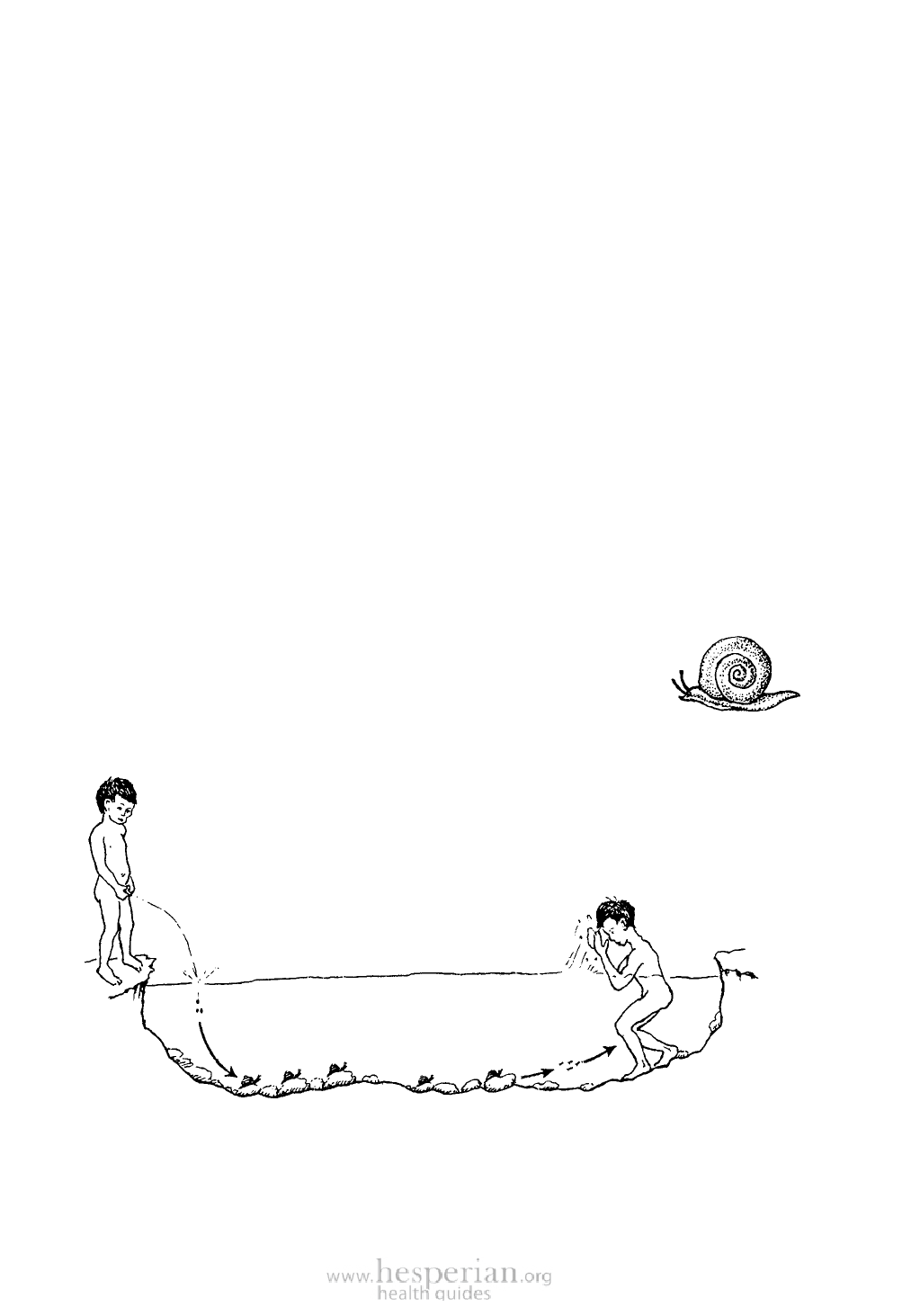
146 Where There Is No Doctor 2011
BLOOD FLUKES (SCHISTOSOMIASIS, BILHARZIA)
This infection is caused by a kind of worm that gets into the bloodstream. Different
types of blood flukes are found in different parts of the world. One kind, common in
Africa and the Middle East, causes blood in the urine. Other types, which cause bloody
diarrhea, occur in Africa, South America, and Asia. In areas where these diseases are
known to occur, any person who has blood in his urine or stools should have a
sample of it tested for fluke eggs.
Signs:
• The most common sign is blood in the urine (especially when passing the last
drops)—or, for other kinds of flukes, bloody diarrhea.
• Pain may occur in the lower belly and between the legs; it is usually worst at the end
of urinating. Low fever, weakness, and itching may occur. In women, there may be
sores that look like a sexually transmitted infection.
• After months or years, the kidneys, liver or spleen may be damaged or enlarged,
which can cause pain and eventually even death.
• Sometimes there are no early signs. In areas where schistosomiasis is very common,
persons with only mild signs or belly pain should be tested.
Treatment:
See a health worker. Praziquantel works for all types of blood flukes.
Metrifonate and oxamniquine work for some kinds of blood flukes.
For dosages see p. 376.
Prevention:
Blood flukes are not spread directly from person to person. Part
of their life they must live inside a certain kind of small water snail.
Blood flukes spread like this:
SNAIL,
REAL SIZE
1. Infected person
urinates or defecates
in water.
2. Urine or feces has
worm eggs in it.
3. Worm eggs hatch
and go into snails.
5. In this way, someone who washes or
swims in water where an infected person
has urinated or defecated also becomes
infected.
4. Young worms
leave snail and go
into another person.
To prevent schistosomiasis, cooperate with programs to kill snails and treat infected
persons. But most important: Everyone should learn to use latrines and NEVER
URINATE OR DEFECATE IN OR NEAR WATER.
For information on guinea worm, which is also spread in water, see p. 406 and 407.